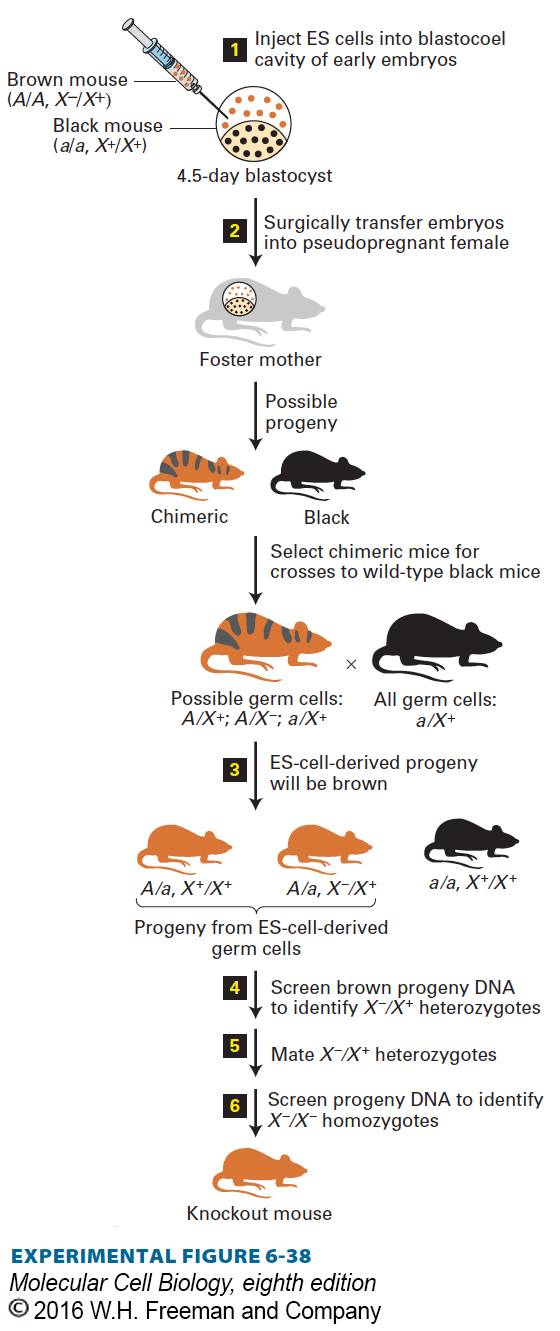
EXPERIMENTAL FIGURE 6- 38 ES cells heterozygous for a disrupted gene are used to produce knockout mice. Step 1: Embryonic stem (ES) cells heterozygous for a knockout mutation in a gene of interest (X) and homozygous for a dominant allele of a marker gene (here, brown coat color, A) are transplanted into the blastocoel cavity of 4.5- day blastocysts that are homozygous for a recessive allele of the marker (here, black coat color, a). Step 2: The early embryos are then implanted into a pseudopregnant female. Those progeny containing ES- derived cells are chimeras, as indicated by their mixed black and brown coats. Step 3: Chimeric mice are then backcrossed to black mice; brown progeny from this mating have ES- derived cells in their germ line. Steps 4–6: Analysis of DNA isolated from a small amount of tail tissue can identify brown mice heterozygous for the knockout allele. Intercrossing of these mice produces some individuals homozygous for the disrupted allele— that is, knockout mice. See M. R. Capecchi, 1989, Trends Genet. 5:70.
[Leave] [Close]